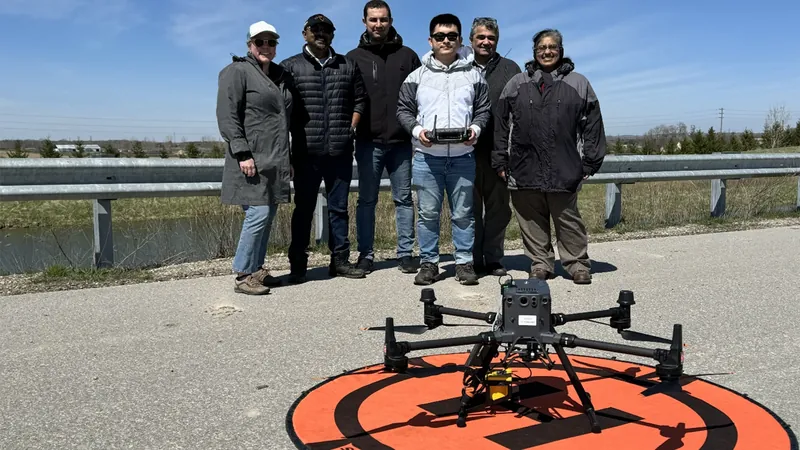
Walking: Is Going Fast or Far More Beneficial? Doctors Weigh In!
2024-11-19
Author: Charlotte
Walking: Is Going Fast or Far More Beneficial? Doctors Weigh In!
Walking has become more than just a leisurely pastime; it’s a growing trend embraced by those seeking both physical and mental health benefits. According to Dr. Johanna Contreras, a cardiologist at Mount Sinai Fuster Heart Hospital, walking stimulates the vascular system, enhances circulation, improves blood sugar management, and helps reduce inflammation. The simplicity of walking, being low-impact, makes it an ideal choice for beginners and seasoned exercisers alike.
However, there's an ongoing debate about whether the key to maximizing benefits lies in walking faster or farther. Dr. Contreras suggests that both aspects play a crucial role in achieving overall fitness.
Benefits of Walking Farther
For those who opt for longer walks, the primary advantage is building endurance. According to Dr. Contreras, walking for extended periods can help condition your heart, allowing it to maintain an elevated heart rate without strain. This is particularly beneficial as you age; longer, less intense walks can yield significant health benefits without overly taxing your heart.
Moreover, longer walks can provide additional health perks. While the intensity of a short, fast walk may yield similar benefits for fitness levels, longer walks allow for a more sustained cardiovascular workout. In fact, the Centers for Disease Control and Prevention (CDC) estimates that one minute of high-intensity walking approximately equals two minutes of gentler walking in terms of health benefits.
Advantages of Walking Faster
On the flip side, walking at an increased pace enhances cardiovascular demand. Dr. Lauren Hannon Redler, an orthopedic surgeon and sports medicine physician at NewYork-Presbyterian, points out that greater speed elevates heart rate further, providing a more intense workout. This heightened demand helps improve how muscles utilize oxygen and increases overall exercise capacity, making faster walks great for those looking to intensify their workout in a shorter time span.
While both speed and distance have their advantages, experts are divided on which is more effective for weight loss. Dr. Redler prefers slower, longer walks for burning fat while sustaining heart rate in the “zone 2” cardio range. Conversely, Dr. Contreras advocates for faster walking as a method of burning more calories due to the increased intensity of such workouts.
Finding What Works for You
Ultimately, the best approach may combine both strategies. Regularly alternating between longer, gentler walks and brisk, short walks could provide well-rounded fitness gains without compromising time. As fitness experts note, the most effective exercise regime is one tailored to your lifestyle and personal preferences—a routine you can adhere to consistently.
For beginners looking to enhance their walking speed, interval walking can be a game-changer. Alternating between slower paces and quick bursts of speed not only makes the workout more interesting but gradually trains the body for improved performance.
Tips for Safe Walking
Regardless of your chosen method, safety is paramount. Gradually increase your walking distance to avoid overuse injuries, and invest in suitable footwear to support your stride.
Conclusion
Walking stands out as a versatile and accessible exercise option that reinforces overall wellness. Whether you choose to go faster, further, or incorporate a mix of both, what truly matters is that you find joy in moving your body. Remember, every step counts toward a healthier you!









 Brasil (PT)
Brasil (PT)
 Canada (EN)
Canada (EN)
 Chile (ES)
Chile (ES)
 España (ES)
España (ES)
 France (FR)
France (FR)
 Hong Kong (EN)
Hong Kong (EN)
 Italia (IT)
Italia (IT)
 日本 (JA)
日本 (JA)
 Magyarország (HU)
Magyarország (HU)
 Norge (NO)
Norge (NO)
 Polska (PL)
Polska (PL)
 Schweiz (DE)
Schweiz (DE)
 Singapore (EN)
Singapore (EN)
 Sverige (SV)
Sverige (SV)
 Suomi (FI)
Suomi (FI)
 Türkiye (TR)
Türkiye (TR)